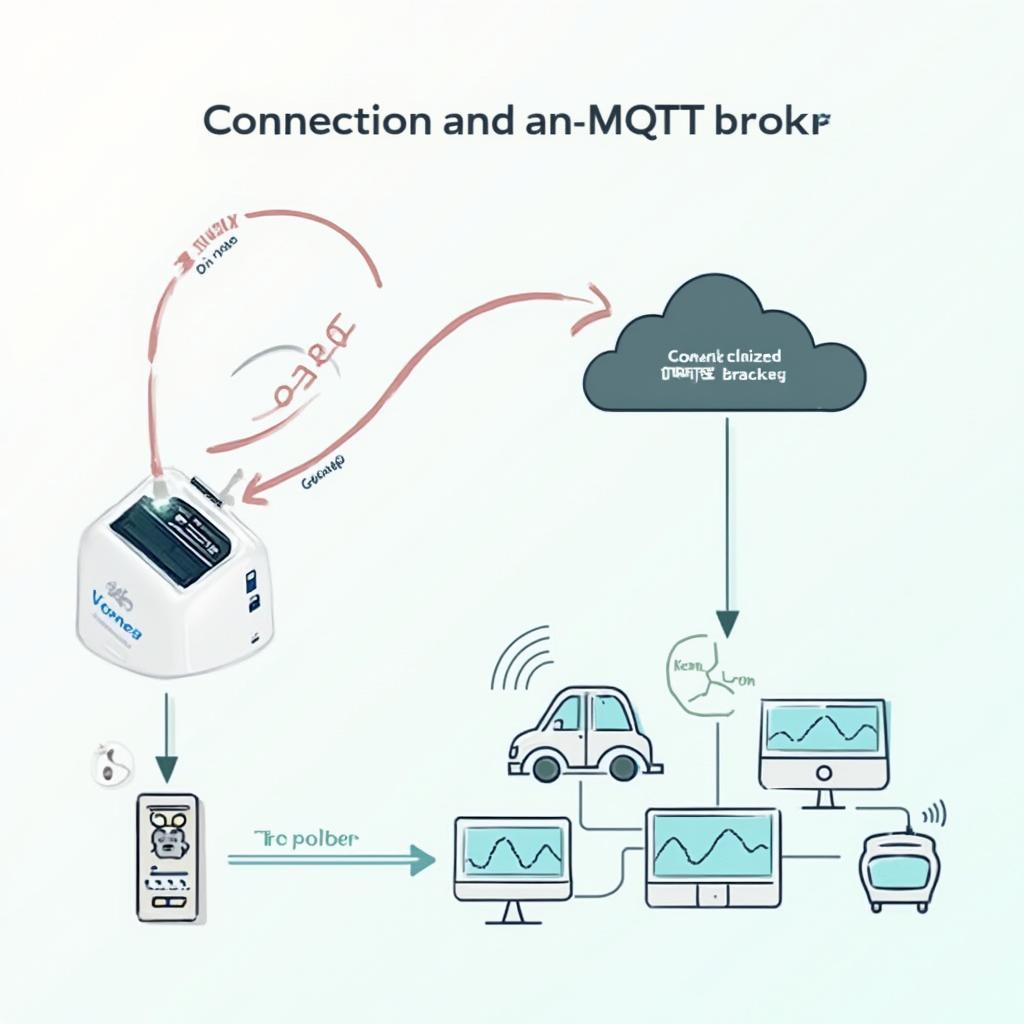Connecting your car’s onboard diagnostics to the Internet of Things (IoT) opens up a world of possibilities, from real-time vehicle tracking to predictive maintenance. This guide explores how to bridge the gap between your car’s OBD2 port and the powerful MQTT protocol, enabling seamless data transmission and analysis.
Connecting your vehicle’s OBD2 port to the MQTT protocol can seem daunting, but with the right guidance, it’s a manageable project that offers valuable insights into your car’s performance and health. This integration allows you to tap into a wealth of data, transforming your vehicle into a connected device within the expansive Internet of Things. Whether you’re a seasoned tech enthusiast or just starting your IoT journey, understanding the process of linking OBD2 and MQTT can empower you to monitor, analyze, and even control various aspects of your car remotely. Learn how to leverage this technology to enhance your driving experience and potentially even save money on maintenance. Check out our guide on obd2 mqtt for a comprehensive walkthrough.
Understanding OBD2 and MQTT
OBD2, or On-Board Diagnostics, is a standardized system that provides access to a vehicle’s diagnostic data. This data includes everything from engine speed and fuel consumption to fault codes and sensor readings. MQTT, or Message Queuing Telemetry Transport, is a lightweight messaging protocol designed for machine-to-machine (M2M) communication. It’s ideal for IoT applications due to its low bandwidth requirements and efficient data delivery.
Why Connect OBD2 to MQTT?
Combining OBD2 with MQTT allows you to collect, transmit, and analyze vehicle data in real-time. This opens the door to numerous applications, such as:
- Real-time vehicle tracking: Monitor your car’s location and movement.
- Predictive maintenance: Analyze data trends to anticipate potential issues and schedule maintenance proactively.
- Improved fuel efficiency: Track fuel consumption and driving habits to identify areas for improvement.
- Remote diagnostics: Access diagnostic data remotely to troubleshoot problems.
- Fleet management: Monitor and manage multiple vehicles in real-time.
After establishing a secure connection between your OBD2 scanner and the MQTT broker, you can begin transmitting data seamlessly.
Setting up Your OBD2 to MQTT System
Getting your OBD2 data onto an MQTT broker typically involves these steps:
- Choose an OBD2 Dongle: Select a dongle that supports wireless communication (e.g. Bluetooth, WiFi). Check out the obd2 insurance dongle for a great example.
- Install Software: Install software on a device (e.g. smartphone, Raspberry Pi) that can communicate with the OBD2 dongle and the MQTT broker.
- Configure MQTT Broker: Set up an MQTT broker (either a cloud service or a self-hosted server).
- Connect and Transmit: Configure the software to read data from the OBD2 dongle, format it, and publish it to the MQTT broker.
Choosing the Right Hardware and Software
Selecting the appropriate hardware and software is crucial for a successful OBD2 to MQTT setup. Consider factors like compatibility, ease of use, and cost. For instance, a Raspberry Pi 3 car obd2 setup provides a flexible and affordable solution for many projects.
Data Analysis and Visualization
Once your OBD2 data is flowing into the MQTT broker, you can use a variety of tools to analyze and visualize it. This could involve creating custom dashboards, integrating with existing IoT platforms, or using data analysis software.
“Integrating OBD2 data with MQTT unlocks valuable insights for both individual car owners and fleet managers,” says Alex Thompson, Automotive IoT Specialist at Connected Car Solutions. “The ability to monitor vehicle performance in real-time empowers proactive maintenance and improved operational efficiency.”
Conclusion
Connecting OBD2 to MQTT provides a powerful way to tap into the wealth of data generated by your vehicle. By following the steps outlined in this guide, you can unlock valuable insights into your car’s performance, improve maintenance, and become part of the growing IoT ecosystem. Remember to explore resources like obd2 mqtt for more detailed instructions and specific examples.
FAQ
- What is the easiest way to connect OBD2 to MQTT? Using a pre-built solution or a platform that simplifies the integration process is often the easiest approach.
- Is it expensive to set up an OBD2 to MQTT system? The cost can vary depending on the chosen hardware and software, but affordable options are available.
- What are the security considerations for OBD2 to MQTT? Ensuring secure data transmission and access to the MQTT broker is crucial to prevent unauthorized access.
- Can I use OBD2 to MQTT for commercial fleet management? Yes, OBD2 to MQTT is ideal for tracking and managing multiple vehicles in a fleet.
- What kind of data can I collect with OBD2 and MQTT? A wide range of data, including speed, fuel consumption, engine temperature, and diagnostic codes, can be collected.
- Do I need programming skills to set up OBD2 to MQTT? While some technical knowledge is helpful, many user-friendly tools and platforms minimize the need for extensive programming.
- Where can I find more information about OBD2 to MQTT? Online forums, tutorials, and specialized websites offer valuable resources and community support.
Looking for further information on integrating your car’s data with other systems? Check out our articles on obd2 insurance dongle and raspberry pi 3 car obd2 for more insightful guides.
Need assistance with your OBD2 to MQTT setup? Contact us via WhatsApp: +1(641)206-8880, Email: [email protected] or visit us at 789 Elm Street, San Francisco, CA 94102, USA. Our 24/7 customer support team is ready to help.

